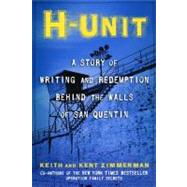
What is included with this book?
The New copy of this book will include any supplemental materials advertised. Please check the title of the book to determine if it should include any access cards, study guides, lab manuals, CDs, etc.
The Used, Rental and eBook copies of this book are not guaranteed to include any supplemental materials. Typically, only the book itself is included. This is true even if the title states it includes any access cards, study guides, lab manuals, CDs, etc.
Bobby Lee was the first student in our class to die.
Bobby Lee’s face belied his 48 years. Short in stature, African-American, well-liked, this was the kind of guy a person would ask, “What is this guy doing locked up?” He may have been a streetwise criminal (the San Jose Mercury News reported that Bobby had been involved in burglaries, drug possession, and an assault case), but he didn’t seem the violent, aggressive, in-your-face type. But in a classroom environment, who does?
Bobby regularly sat in the far corner, right next to the door of H-Unit’s Education Classroom. He was bespectacled, erudite looking, and soft spoken. The “ReadBacks” were his favorite part of the class. He liked to participate in the writing assignments; other times he enjoyed just listening to the other class members’ writings being read back. His attendance was so consistent that after a two-week absence, we began to wonder, “Where’s Bobby?”
One day in 2005 Bobby Lee was diagnosed with bronchitis, or possibly pneumonia. After he was prescribed some over-the-counter drugs like cough syrup, Tylenol, and Benadryl, along with a fistful of antibiotics, Bobby collapsed on his way back to his H-Unit bunk. A day later, he was rushed to nearby Marin General Hospital where his heart stopped three times en route to hospital care. He died in Marin General due to massive bleeding into his lungs. Soon after his death, the H-Unit gossip mill was abuzz with whispers that Bobby’s ambulance ride out of San Quentin was needlessly delayed. One preposterous story had the ambulance driver stopping for a snack on the way to the hospital. (One of the first things we learned about prison yards like H-Unit is that they make office water-cooler gossip mills look like a G3 Summit.)
A few days after Bobby’s death, we attended a memorial service held up on “the Hill,” in the Protestant chapel on San Quentin’s North Block, overlooking the picture-postcard San Francisco Bay view. North Block and the Hill--the main areas of the prison--are where the Death Row inmates and the “lifers” are housed, men condemned or serving decades for serious violent and antisocial crimes such as murder, armed robbery, and drug dealing.
We drove across the Richmond San Rafael Bridge to pay final tribute to Bobby. Turns out it was a two-for-one funeral service staged inside San Quentin’s walls. Another Latino inmate who had died of cancer was also being memorialized. At the front of the chapel near the pulpit was a color photocopy of Bobby’s prison ID picture, scotch-taped to a music stand. (Inmates look ominous on their prison ID cards, partly because some photos are taken after a days-long, milk-cart-run bus journey on the infamous “Blue Goose,” which drops off and picks up inmates from several county jails or state institutions on the way to SQ.)
Without his glasses, Bobby’s picture lacked the more studious features we remembered him by. On the one-page memorial handout, his last name was misspelled. Seated on the chapel’s pews were four dozen or so black and Latin inmates. We were among a handful of whites attending the service.
The minister delivered a generic religious eulogy for Bobby and the other fallen Latin inmate. After a couple of hymns, prayers, and Bible passages, members of the audience were invited to come up and speak about the recently departed. When it looked as if nobody would venture a public pronouncement on Bobby’s behalf, we looked at each other. Then Kent walked slowly to the front of the chapel, unfolding a couple of sheets of paper from his back pocket--a printout of the words that Bobby had written in class.
Bobby’s kinetic prose came alive. Short, powerful, street-smart bursts of narrative. And suddenly the man whose sullen image was taped to the music stand rose like Lazarus across the room with colorful and vibrant tales and anecdotes of his locked-down routine. The first piece was a sardonic, comedic account of two men having to share a 6-by-5-foot patch of dorm, upper and lower housing bunks, and two small lockers with feet dangling over their bunks. The second passage detailed a painful, gut-wrenching breakup with a woman on the driveway of Bobby’s Oakland pad. The third piece was a lighthearted account of Bobby Lee the Player, hitting a local East 14th Street Oaktown nightclub on the weekend, having some fun before Stormy Monday came around.
Bobby’s fourth and final offering was the piece de resistance: a declarative call to battle on the mean streets of East Oakland. It resonated with a rousing tone reminiscent of Henry V’s Shakespearean St. Crispin’s Day speech the night before the 1415 battle of Agincourt.